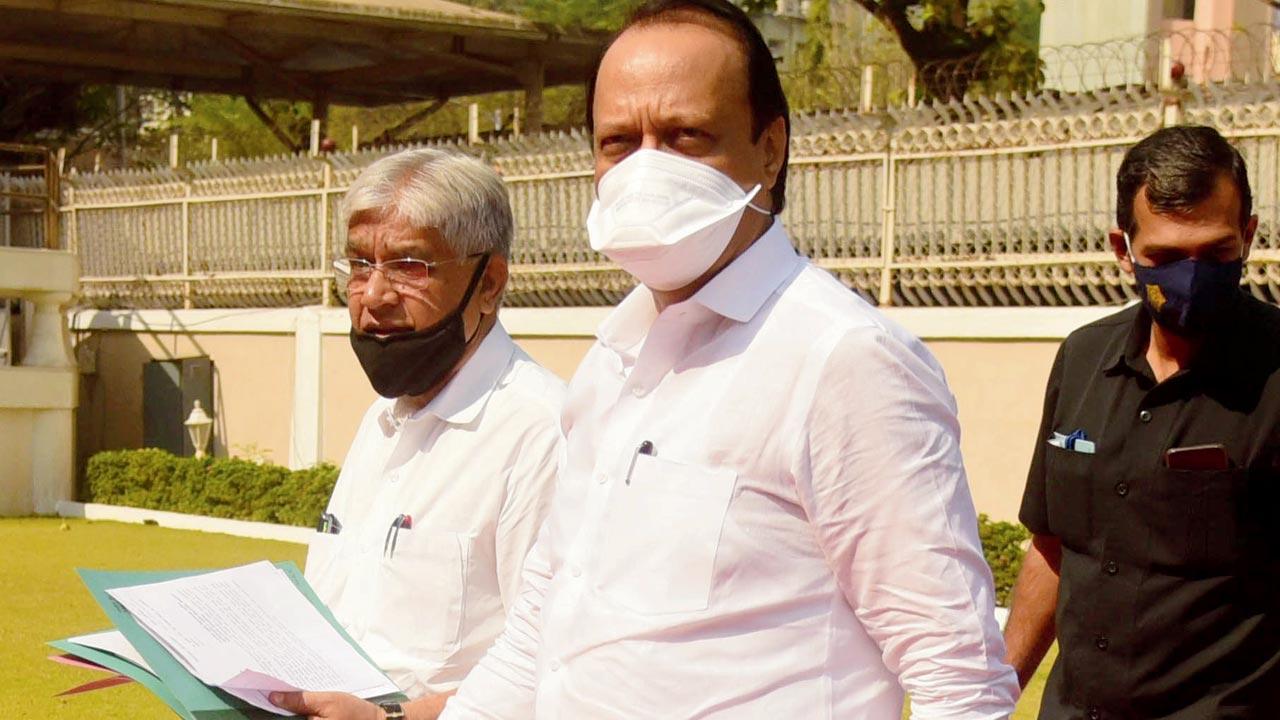Only agriculture, allied sectors are projected to grow, by 11 per cent, thanks to good monsoon; manufacturing, construction hit hardest

Finance Minister Ajit Pawar told the state legislature on Thursday to not expect much from the budget. Pic/Suresh Karkera
Hit by the COVID-19 pandemic, the state economy has taken a downturn, the Economic Survey of Maharashtra tabled in the legislature on Friday showed. According to the survey, the state economy is expected to register an eight per cent negative growth during 2020-21.
ADVERTISEMENT
Except for the Agriculture and Allied Activities sector, which is expected to grow at 11.7 per cent due to an overall good monsoon, other important sectors have been projected as bad performers.
The manufacturing and construction sectors were hit hardest and are expected to grow at -11.8 per cent and -14.6 per cent respectively, due to which the industry sector’s growth is expected to be -11.3 per cent, said the survey.
Hotels and restaurants are among the major industries to be hit by the downturn. File pic
Due to the hard impact of the pandemic situation, mainly on trade, repairs, hotels and restaurants and transport sectors, the services sector is expected to show a negative growth of 9.0 per cent.
The projections are expected to reflect in the state budget to be presented on March 8. Finance Minister Ajit Pawar had advised the legislators on Thursday to not expect much from the budget.
The survey commented on the impact of the pandemic on the state’s revenue collection. “Due to the lockdown announced in order to control the spread of COVID-19, industries and services, except essential services were closed, which resulted in slowing down of the economy.
“To revive the economy, the concessions given in the state excise duties, motor vehicle tax and stamp duty impacted the state revenue adversely,” it said, adding that the Indian economy was also expected to show a negative growth of eight per cent.
COVID-19 management
The report made ample observations on the state’s COVID-19 mitigation efforts under the public health chapter. “Monthwise comparison of active cases of COVID-19 shows that the weekly average growth rate was maximum (27.2 per cent) in March 2020, and it decreased to 0.16 per cent in January 2021. The doubling time of positive cases increased from 5.4 days in March 2020 to 420.1 days in January 2021,” it said.
“The recovery rate in January 2021 has increased to 94.8 per cent as compared to 12.9 per cent in March 2020. During the same period the number of tests performed per million population has increased from 600 to 1,03,715,” the survey noted, adding that as on January 15, 2021, the most affected districts in the state, considering the number of COVID-19 cases per million population were Pune (33,488), Thane (27,584), Nagpur (26,135) and Mumbai city and suburban taken together (25,807).
Doctors’ shortage
In another observation about healthcare, the survey noticed a poor allopathy doctor-population ratio. The state has one doctor per 1,188 people. “Up to December 2020, 1,61,379 (of which 72,539 are postgraduate) allopathy doctors were registered. In the past five years, 31,991 allopathy doctors have recently registered and 72,358 doctors have renewed their licences. Based on the data of the last five years, the estimated doctor-population ratio in the State is 1:1188,” said the survey, adding that the state’s population was expected to grow to be 12.44 crore this year, from 11.24 crore that was registered in the 2011 census.
Mounting debt
According to the survey, the state’s debt burden was R5,20,717 crore (budget estimates) while the interest payment due was R35,531 crore. Last fiscal, the debt stock was Rs 4,64,020 crore (revised estimates) and the interest due was R34,173 crore. However, the current debt, which is 19.6 per cent of the Gross State Domestic Product (GSDP), is well within the limit of 25 per cent as per the national fiscal policy rules.
—11.8 per cent
Expected growth of manufacturing sector
—14.6 per cent
Expected growth of construction sector
 Subscribe today by clicking the link and stay updated with the latest news!" Click here!
Subscribe today by clicking the link and stay updated with the latest news!" Click here!






